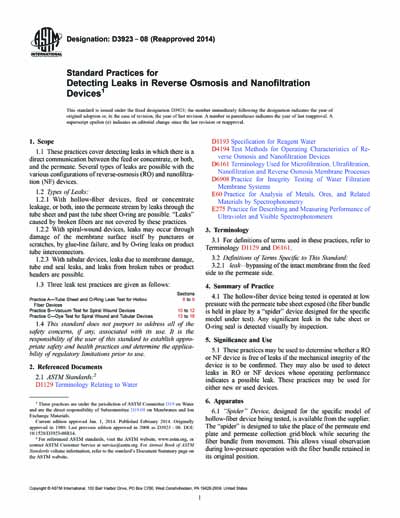Historical
ASTM D3923-08(2014)
Standard Practices for Detecting Leaks in Reverse Osmosis and Nanofiltration Devices
1.1 These practices cover detecting leaks in which there is a direct communication between the feed or concentrate, or both, and the permeate. Several types of leaks are possible with the various configurations of reverse-osmosis (RO) and nanofiltration (NF) devices.
1.2 Types of Leaks:
1.2.1 With hollow-fiber devices, feed or concentrate leakage, or both, into the permeate stream by leaks through the tube sheet and past the tube sheet O-ring are possible. “Leaks” caused by broken fibers are not covered by these practices.
1.2.2 With spiral-wound devices, leaks may occur through damage of the membrane surface itself by punctures or scratches, by glue-line failure, and by O-ring leaks on product tube interconnectors.
1.2.3 With tubular devices, leaks due to membrane damage, tube end seal leaks, and leaks from broken tubes or product headers are possible.
1.3 Three leak test practices are given as follows:...
1.4 This standard does not purport to address all of the safety concerns, if any, associated with its use. It is the responsibility of the user of this standard to establish appropriate safety and health practices and determine the applicability of regulatory limitations prior to use.
ASTM International [astm]

